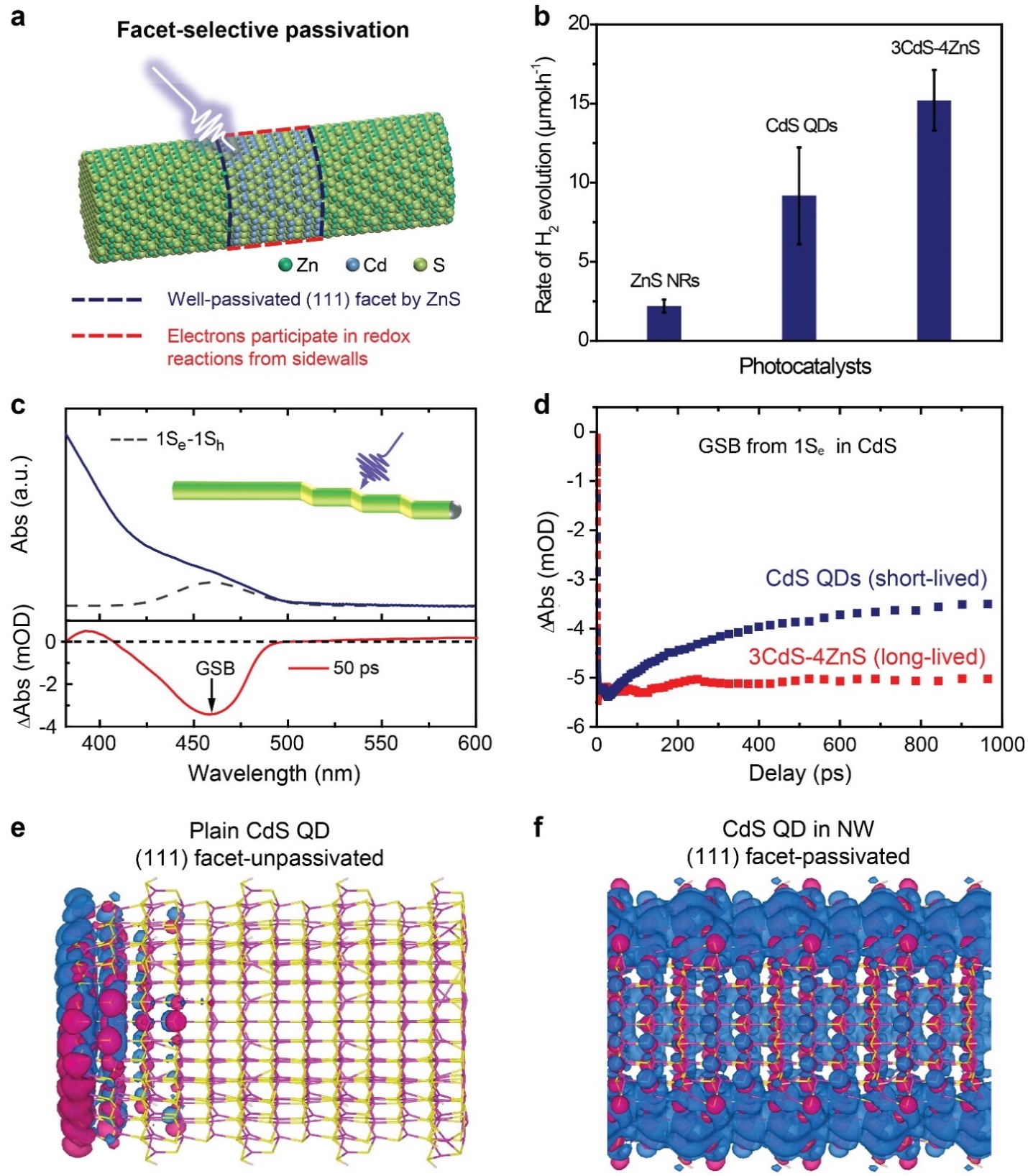Colloidal quantum dots stand out as one of the most promising photocatalysts thanks to their size-dependent optical and electronic properties. However, surface traps originating from their dangling bonds usually introduce mid-gap states and strongly localize charge carriers. Solutions such as ligand passivation and epitaxial shell growth can mitigate this problem, however, are not suitable for photocatalysis due to the impeded carrier extraction and surface reactions.
A multi-institutional team led by Prof. YU Shuhong (USTC) and Prof. Edward H. Sargent (University of Toronto) demonstrated a new synthetic strategy that can controllably stack CQDs into nanowires, enabling simultaneous passivation of defect-prone facets in CQDs and facile charge extraction from their sidewalls. The research article entitled “Pulsed axial epitaxy of colloidal quantum dots in nanowires enables facet-selective passivation” was published on Nature Communications (Y. Li et al. Nat. Commun. 2018, 9, 4947) on Nov. 23th.

Figure a. Facet-selective passivation of quantum-dots-in-nanowires.
Researchers adopted the solution-solid-solid growth to epitaxially stack CQDs into nanowires. Calculations on the relative intercalation energy of cadmium and zinc atoms into solid catalysts indicate that cadmium is energetically preferred over zinc for this process. Once cadmium precursor is added, the growth of cadmium sulfide overwhelms. In this way, they reported a new growth mode ―pulsed axial epitaxy ― that can dynamically switch the axial composition in nanowires by controlling the introduction of cadmium precursor. This is not readily achievable in prior flask-based colloidal synthesis.
The facet-selective passivation in this unique architecture enables much enhanced photocatalytic performance compared with plain QDs. Combining the time-resolved spectroscopy and theoretical calculations, researchers revealed that the (111) facet passivation avoids the localization of photogenerated carriers, which instead, spread over the whole QDs. The long lifetime of carriers in QDNWs enables facile extraction for surface reactions.
This work highlights the significance of creating unique architectures to achieve better performance. This emerging pulsed axial epitaxy strategy can be extended to other quantum-dots-in-nanowire systems and thus could allow promising QD-based applications possible in lasers, single photon sources, and single-electron detectors.
(Written by LI Yi, edited by LV Jinghao, USTC News Center)